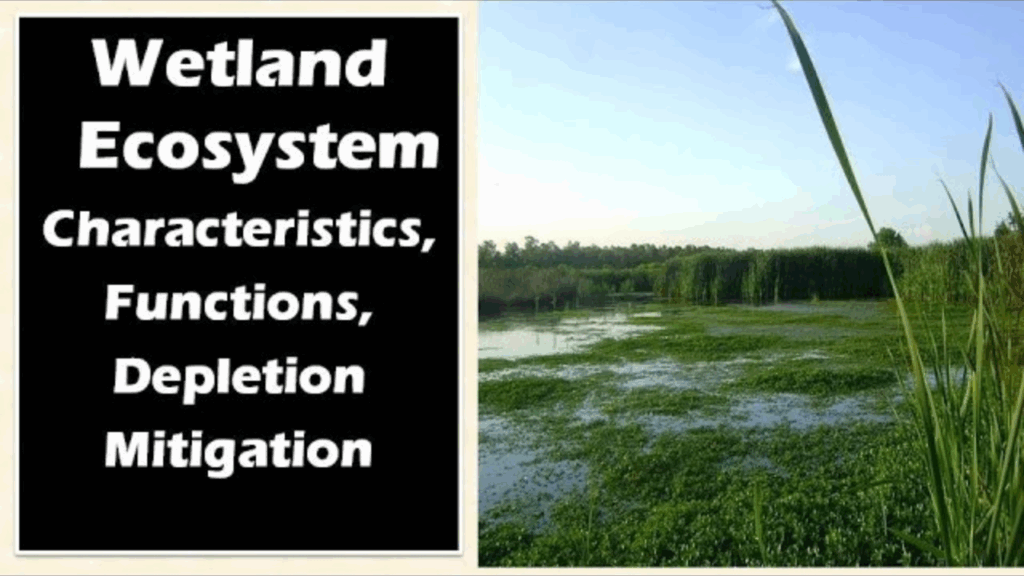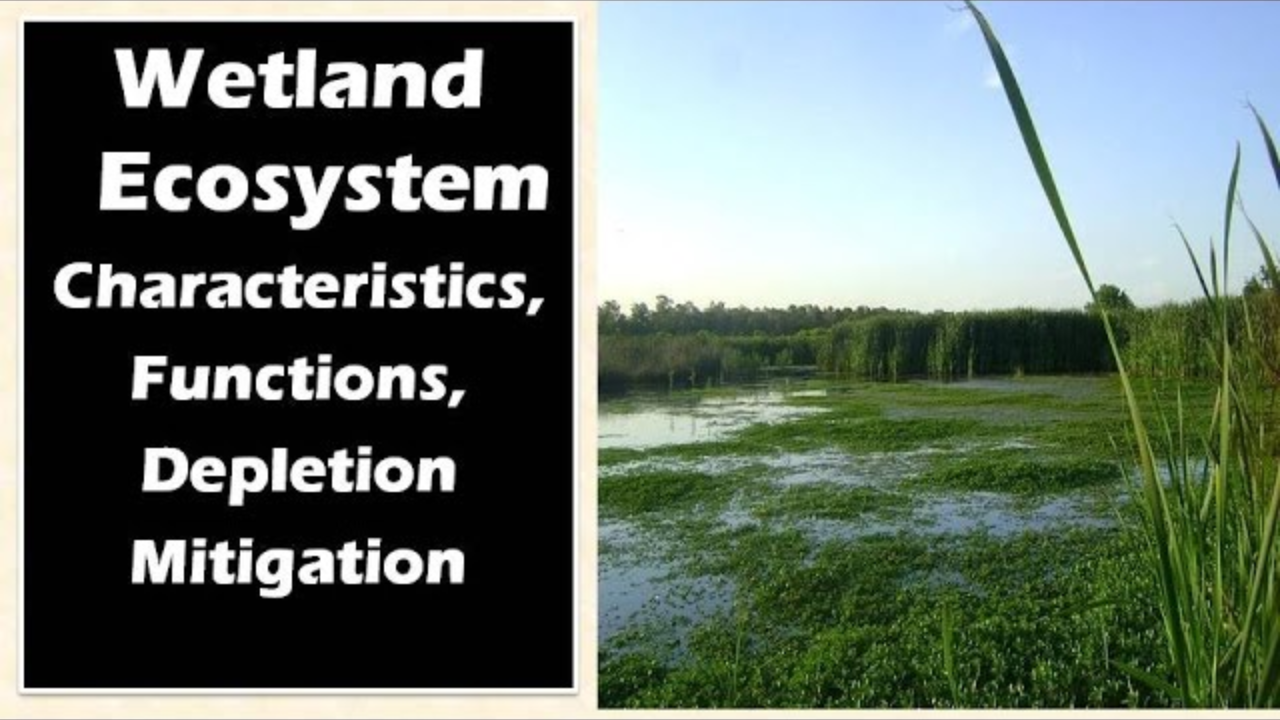
Wetlands—marshes, swamps, peatlands, and mangroves—are often overlooked ecosystems, yet they are among the most productive environments on Earth. They regulate water, store carbon, filter pollutants, and provide habitats for countless species. Sadly, over 35% of the world’s wetlands have been lost in the past century due to urbanization, agriculture, and climate change.
Fortunately, wetland restoration projects across the globe are reversing this trend. By rebuilding degraded wetlands, we are not only reviving ecosystems but also combating climate change, protecting biodiversity, and securing water supplies for millions of people.
Why Wetlands Are Crucial to the Planet
Wetlands are sometimes called the “kidneys of the Earth” because of their water-purifying role. They trap sediments, absorb pollutants, and recharge groundwater. They also act as carbon sinks, storing massive amounts of CO₂ in their soils and vegetation. Moreover, wetlands buffer coastal areas from floods and storms, making them essential in a world facing rising sea levels.
Landmark Wetland Restoration Projects Around the World
1. The Everglades Restoration (USA)
The Florida Everglades is the largest subtropical wetland in North America, but decades of drainage and development nearly destroyed it. The Comprehensive Everglades Restoration Plan (CERP) is one of the most ambitious restoration projects in history, aiming to restore natural water flow, improve water quality, and protect wildlife.
2. Mesopotamian Marshes (Iraq)
Once drained and devastated, Iraq’s Mesopotamian Marshes—often called the “Garden of Eden”—are being revived. Restoration projects have reintroduced water flow, bringing back native fish, buffalo populations, and migratory birds.
3. Mangrove Restoration in Indonesia
Indonesia has lost significant mangrove cover due to shrimp farming and logging. Large-scale projects are replanting mangroves, which protect coasts from tsunamis and storms while also supporting fisheries and local communities.
4. The Danube Delta (Europe)
Spanning Romania and Ukraine, the Danube Delta is Europe’s largest wetland. Restoration efforts have focused on reconnecting rivers to floodplains, reviving fish populations, and improving biodiversity.
5. Coastal Wetlands in China
China’s restoration projects along the Yangtze River and coastal wetlands aim to combat soil erosion, support migratory birds, and provide natural flood defenses for growing cities.
Key Benefits of Wetland Restoration
1. Climate Regulation
Wetlands are carbon storage champions. Restoring peatlands and mangroves reduces greenhouse gas emissions and helps mitigate climate change.
2. Biodiversity Protection
From fish and amphibians to migratory birds and endangered mammals, wetlands provide critical habitats. Restoration ensures survival of species under threat.
3. Flood and Storm Defense
Wetlands act as natural sponges, absorbing excess rainfall and storm surges, which helps protect cities and farmland from flooding.
4. Clean Water Supply
By filtering pollutants and sediments, restored wetlands improve water quality and recharge groundwater, benefitting both people and ecosystems.
5. Economic and Social Value
Restored wetlands support agriculture, fisheries, and ecotourism, creating livelihoods while sustaining local communities.
Table: Examples of Global Wetland Restoration Projects
| Region/Project | Focus Area | Key Outcomes |
|---|---|---|
| Florida Everglades (USA) | Water flow & wildlife | Improved water quality, restored habitats |
| Mesopotamian Marshes (Iraq) | Re-flooding marshes | Return of native species, cultural revival |
| Indonesia Mangroves | Coastal resilience | Storm protection, fisheries recovery |
| Danube Delta (Europe) | River-floodplain connection | Enhanced biodiversity, fish stock improvement |
| China Coastal Wetlands | Erosion control | Stronger flood defenses, support for bird species |
| African Wetlands (Botswana) | Habitat protection | Safeguarding Okavango Delta biodiversity |
Broader Impact on People and the Planet
Wetland restoration is not just an ecological concern—it’s a human survival strategy. These projects reduce disaster risks, ensure food security, and provide fresh water. They also safeguard cultural heritage sites and indigenous practices tied to wetlands.
As global awareness grows, more governments, NGOs, and communities are investing in restoring these vital ecosystems.
Overview Table
| Benefit of Restoration | How It Helps | Long-Term Impact |
|---|---|---|
| Climate Regulation | Stores carbon, reduces emissions | Mitigates climate change |
| Biodiversity Protection | Provides habitats for species | Prevents extinctions |
| Flood & Storm Defense | Absorbs water, protects coasts | Reduces disaster losses |
| Clean Water Supply | Filters pollutants, recharges aquifers | Safe drinking water |
| Economic Growth | Supports tourism & fisheries | Sustainable livelihoods |
| Cultural Value | Restores heritage sites | Revives traditions and practices |
Final Thoughts
Wetlands may not grab headlines like rainforests or coral reefs, but their restoration could be one of the most powerful tools we have to combat climate change and water insecurity. From the Everglades to the Mesopotamian Marshes, these projects are proof that healing the planet is possible.
Every restored wetland is a step toward a more resilient, biodiverse, and water-secure future. Protecting and expanding these efforts is not optional—it’s essential for life on Earth.
FAQs
Q1: Why are wetlands called the “kidneys of the Earth”?
Because they filter pollutants and purify water, much like kidneys do for the human body.
Q2: How do wetlands fight climate change?
They store vast amounts of carbon, especially peatlands and mangroves, preventing greenhouse gases from entering the atmosphere.
Q3: Can wetland restoration help communities?
Yes, they reduce floods, improve fisheries, provide clean water, and support local economies.

